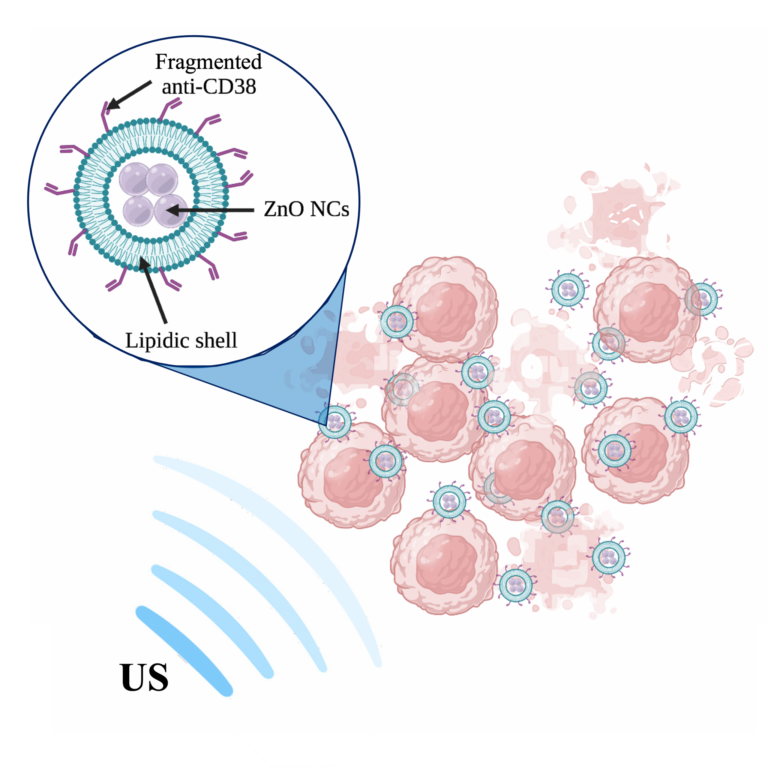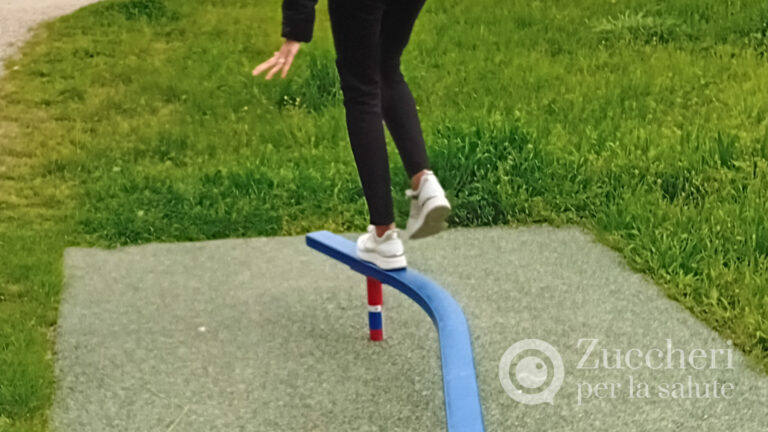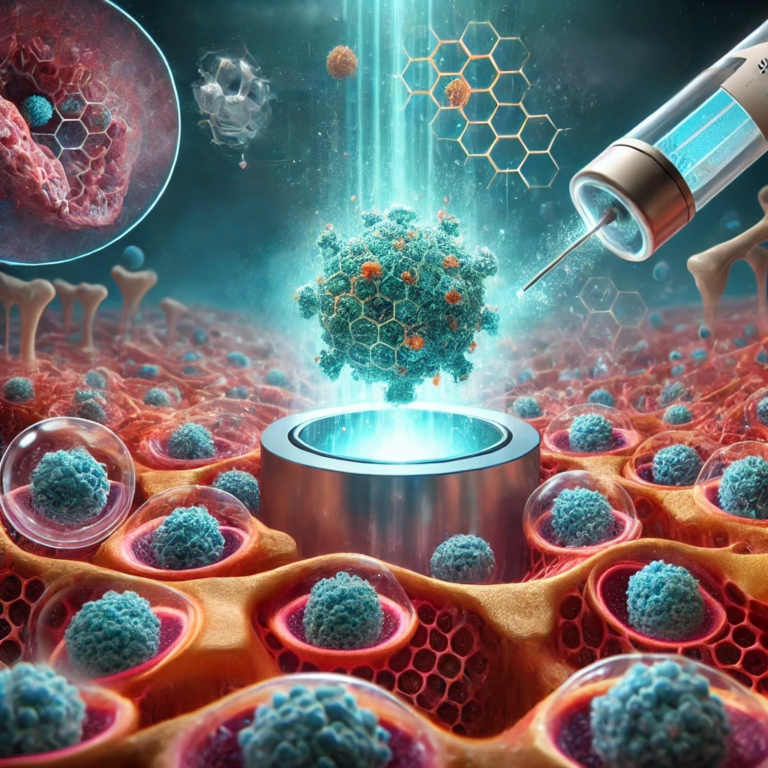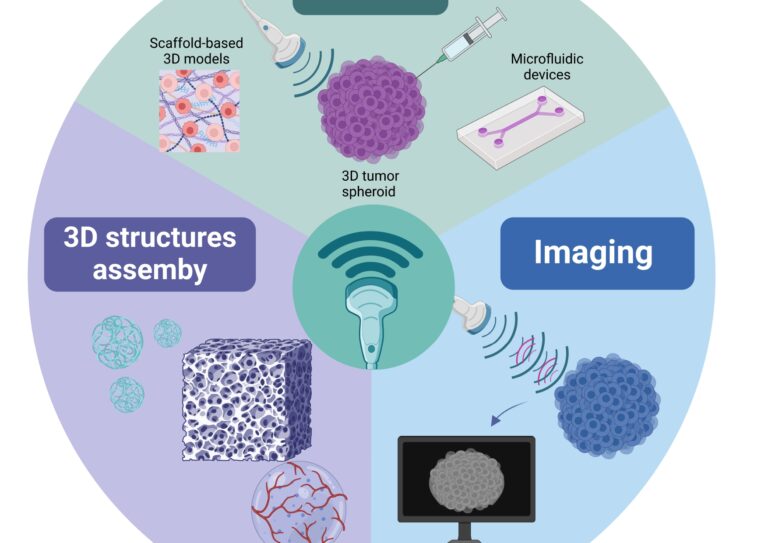-
2Se mentre passeggiamo in un parco, proviamo a cimentarci con qualche attrezzo ginnico, potrebbe capitare che uno di questi sia…Potentially useful insights without AI (AI free)29 September 2024
-
2The race of research to obtain new therapeutic paths in Medicine, especially for tumor diseases, sometimes takes on a spasmodic…English Version25 August 2024
-
2La corsa della ricerca per ottenere nuovi percorsi terapeutici in Medicina, soprattutto per le malattie tumorali, talora assume un ritmo…Future outlook14 August 2024
-
3Gli Ultrasuoni (US) sono onde pressorie acustiche che non sono percepite dall’orecchio umano e si diffondono nei tessuti che compongono…Future outlook8 August 2024
-
4Le terapie antitumorali a volte producono effetti avversi significativi sugli occhi [1,2], che possono danneggiare la vista del paziente a…Therapies and treatment methods4 July 2024
insights
Biomimetic and targeted nanoparticles as a stimulus-reactive therapy against Lymphomas -Dr.ssa Veronica Vighetto, Prof.ssa Valentina Cauda – TNH lab del Politecnico di Torino
Dr.ssa Veronica Vighetto, Prof.ssa Valentina Cauda – TNH lab del Politecnico di Torino Burkitt lymphoma (BL) is a rare neoplasm, particularly aggressive and rapid in its development, which originates in mature B lymphocytes. The incidence is constantly increasing, and currently accounts for 44% of lymphomas in children, but it can also affect adults. The study […]

Dr.ssa Veronica Vighetto, Prof.ssa Valentina Cauda – TNH lab del Politecnico di Torino
Burkitt lymphoma (BL) is a rare neoplasm, particularly aggressive and rapid in its development, which originates in mature B lymphocytes. The incidence is constantly increasing, and currently accounts for 44% of lymphomas in children, but it can also affect adults.
The study of BL led to the identification of the first recurrent chromosomal aberration in lymphoma, t(8; 14)(Q24; q32), and the subsequent discovery of the central role of MYC and the Epstein-Barr virus (EBV, which causes infectious mononucleosis) in tumorigenesis.
Historically, endemic BL, sporadic non-endemic BL, and immunodeficiency-associated BL have been recognized, but the differentiation of these epidemiological variants is confounded by the frequency of EBV positivity [1].
Current Therapy
The treatment to which most patients with this type of non-Hodgkin lymphoma are subjected is chemotherapy which, despite its proven effectiveness, is invasive and non-specific, damaging the patient’s health and quality of life. The side effects of chemotherapy are in fact many and debilitating, from nausea to the formation of bruises, lesions of the mucous membranes and the weakening of the immune system, passing through the damage of healthy cells, since the therapy is not able to distinguish healthy tissue from diseased tissue.
Scientific research for a safe therapy with fewer adverse effects
These are the reasons that move research in the field of oncology towards the development of therapeutic agents capable of being effective, and above all capable of killing cancer cells, sparing healthy tissue from their toxic action.
The group of Prof. Valentina Cauda, who has been working for years to develop cutting-edge nanotechnologies for the targeted therapy of lymphomas and circulating tumors, at the TNH lab of the Polytechnic of Turin, fits into this panorama, to which I turn to find out the latest updates in this regard.
Prof. Cauda, can you explain to us what this therapeutic system proposed in your recent work is about?
“The therapeutic agent is a biomimetic and intelligent nanoparticle. Its heart is composed of nano-sized zinc oxide crystals, then covered with a special lipid formulation, capable of keeping the particle stable in the blood system and making it biomimetic. And it is precisely this outer lipid shell that has been engineered: a “targeting” agent has been attached to it, i.e. a molecule capable of recognizing Burkitt’s lymphoma cancer cells, thus allowing the nanoparticle to preferentially enter diseased cells, sparing healthy ones. In this case, an anti-CD38 antibody fragment was used for this work. The nanoparticle itself is non-toxic, but its therapeutic power can be activated remotely by irradiating the affected area with ultrasound.”
Dr. Veronica Vighetto, you are the first author of the publication discussed here, can you tell us how ultrasound acts on these particles?
“Ultrasound is widely used in clinical settings and does not pose a health hazard. In our case, we have amply verified that ultrasound is able to “turn on” the cytotoxic capacities of the nanoparticles we produce. The study we published demonstrates how this nanotechnology is able, when activated by ultrasound, to effectively initiate the cell death process only in Burkitt’s tumor cells, sparing healthy B lymphocytes.
The innovation of this nanotechnology lies not only in its therapeutic efficacy, but in its multifaceted potential.
The same type of nanoparticle can be engineered with different targeting molecules, which will target different types of cancer cells, making the proposed nanoparticle a useful tool for the therapy of various types of cancers.
And it is therefore for this reason that the therapeutic efficacy of this ultrasound-activated smart nanoparticle on different types of leukemias, lymphomas and multiple myeloma is being evaluated in the same group, going so far as to test its effect in a clinical trial that focuses on cutaneous T-cell lymphoma (CTC) in a particular sub-series that is Sezary Syndrome.
The role of the nanoparticle: both therapeutic and diagnostic.
Another important aspect related to the nature of this nanoparticle is its ability to generate light when stimulated with ultrasound. Prof. Cauda’s group verified how zinc oxide in nanocrystals is able to increase the number of photons, produced during ultrasonic irradiation, thanks to the phenomenon of sonoluminescence. This light produced during therapy would allow not only to visualize the treated area, but to exploit the nanoparticle both as a therapeutic agent and as a diagnostic agent.”
The Future Perspective
Prof. Cauda’s laboratory demonstrates how fast and interdisciplinary research in the medical and technological fields is, and traces a path for the development of intelligent nanotechnologies that can be externally activated in the therapeutic and diagnostic fields, opening up new possibilities for personalized medicine.
References:
[1] López C, Burkhardt B, Chan JKC, Leoncini L, Mbulaiteye SM, Ogwang MD, Orem J, Rochford R, Roschewski M, Siebert R. Burkitt lymphoma. Nat Rev Dis Primers. 2022 Dec 15;8(1):78. doi: 10.1038/s41572-022-00404-3. PMID: 36522349.
https://www.nature.com/articles/s41572-022-00404-3
[2] Vighetto V, Conte M, Rosso G, Carofiglio M, Sidoti Abate F, Racca L, Mesiano G, Cauda V. Anti-CD38 targeted nanotrojan horses stimulated by acoustic waves as therapeutic nanotools selectively against Burkitt’s lymphoma cells. Discov Nano. 2024 Feb 14;19(1):28. doi: 10.1186/s11671-024-03976-z. PMID: 38353903; PMCID: PMC10866835.
https://link.springer.com/article/10.1186/s11671-024-03976-z
[3].Dumontel B, Susa F, Limongi T, Vighetto V, Debellis D, Canta M, Cauda V. Nanotechnological engineering of extracellular vesicles for the development of actively targeted hybrid nanodevices. Cell Biosci. 2022 May 14;12(1):61. doi: 10.1186/s13578-022-00784-9. PMID: 35568919 ; PMCID: PMC9107671
https://cellandbioscience.biomedcentral.com/articles/10.1186/s13578-022-00784-9




